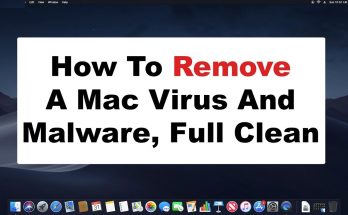Docker has been encountering several performance-associated problems on Mac since the initial days. If you have recently switched your development setting to Docker, you might need to improve your Docker Mac performance.
Web app stacks may be slower than another inherent development environment you have been familiar with. Here, you’ll learn what things you can do to get response time down again to how it used to. We’ll highlight tips to improve Docker performance on Mac.
What Makes Docker Slow on Mac?
Docker performance issues on Mac can be associated with volume performance. It can also affect how volumes are mounted and the basic osxfs filesystem. This can make applications doing input/output disk functions unusable.
Users can bind-mount the volume on their Mac to a Docker container. It provides a look at the file system of the host. Any writes in either a container or a host are shown vice-versa. Keeping the file system consistent causes a burden on macOS and affects performance.
Optimize System Resources
Mac users might have a sufficient amount of RAM. By default, Docker consumes 2GB RAM. So, enhance the available RAM limit for Docker by assigning an additional 2GB RAM. This will enhance memory-intensive tasks.
You can also consider increasing the available CPU amount, especially during increased input/output loading. For example, running Yarn install. Mac Docker desktop, by default, is set to use half of the available processors on the host. You can enhance this limit.
Configure System Hardware
Running processes on Mac can affect performance. To improve performance, you can use Apple task manager – Activity Monitor as it manages the activity of Mac. But, it would not help enhance the Docker performance.
For this, measure and adjust system resources as mentioned in the above point. Tap the settings gear and click Resources. Use the command line to check the number of memory containers you are using. Now, change the settings.
Reduce Work Volume
Modifying the assurance that file system data is accurately replicated to both host and container is the biggest performance optimization. By default, Docker guarantees that the host, as well as the container’s file system, imitate each other.
Perfect regular reflection between the host and container is often not necessary. Temporary discrepancies and certain slight delays can be allowed to enhance the performance. Only a few workloads could need improved consistency.
Options Docker Provides for Consistency
Docker offers three main options for setting the consistency of the volume definition. Changing these options – 1) Cached 2) Consistent 3) Delegated make Mac Docker faster. The Consistent option provides the perfect consistency between the host and container.
Whenever write occurs, data is flushed to all mount’s view participants. In Cached, the host is authoritative. You might notice delays before host writs are open to the container. In the delegate case, the container becomes authoritative.
Shared Caches
When you work on projects that employ Composer for PHP and use Yarn for frontend builds, use shared caches. This is because whenever you begin a Docker container, it’ll be a fresh instance. Downloading payloads and HTTP requests over the internet can add latency.
This will eventually slow down the project’s starting build. You would have to download all the packages of Composer and Yarn again. So, bind-mount the shared ‘docker cache’ volume into a container. Use it across identical projects to access the Composer package.
Reset Your Settings/Changes
Another tip for increasing the Docker Mac performance is resetting the changes. The reason is that changing some settings can make things worse. Containers would not likely begin after altering the memory or CPU settings. So, start Docker Desktop and tap the bug icon.
This will launch a troubleshooting panel. The first option restarts Docker. The second option will take you to the support page. You’ll get a shortcut for Kubernetes restart with a third option and delete the cache with a fourth one. Resetting the settings and uninstalling Docker also help.
Other Important Things to Consider
When the above-described tweaks don’t improve the Docker performance, check the Docker version. Make sure that this app is running the new version for Mac. It will significantly improve the Docker performance on your Mac.
Confirm if your Macintosh HD is formatted like APFS, an acronym for Apple File System. This is the new proprietary HDD format developed by Apple and features some performance optimizations.
The Conclusion
To sum it up, you can increase system resources and use shared caches and volume optimizations for improved Docker performance. Besides optimizations discussed in this post, you can work on many more depending on the context of each setup type.
Now, you can use Docker on your Mac computer with a simple setup saving quality time. You would not need to worry about consuming a large amount of disk space or slow performance.



